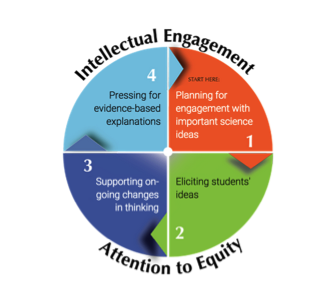In coursework and fieldwork experiences, candidates in the secondary science education trajectory work toward answering the question, How can we teach science to make it meaningful for learners? Through courses in Modeling, Science Literacies, Methods, and Practicum Experiences, including student teaching, students examine the interrelationships between theory and practice in teaching science. On the theoretical side, they examine several underlying issues about the teaching of science: What does it mean to know science? How can we understand and assess what learners know? What kind of doing science is involved in learning science? How can we support learners as they do science? On the practical side, students plan and implement lessons, explore a variety of instructional strategies, interview students, and mesh instructional techniques with classroom management.

The secondary science education trajectory is designed to review current ideas about science education through the exploration of recent research in science learning, instructional innovation and Ambitious Science Teaching, and via reform documents such as A Framework for K-12 Science Education (NRC, 2010) and the Next Generation Science Standards (Lead States, 2013). All coursework is part of a degree/licensure program that has been designed to meet the Model Core Teaching Standards of the Interstate Teacher Assessment and Support Consortium (InTASC) as well as the specific science area (i.e. biology, chemistry, physics, or earth science) for initial preparation of teachers of secondary science.

Learn More about Secondary Education at Peabody College
